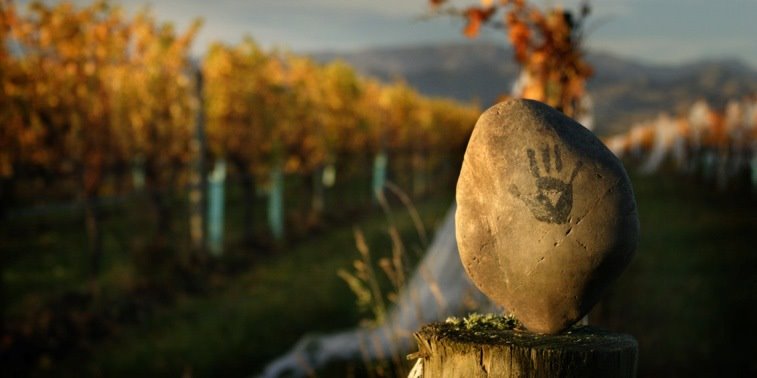Harvest 2010 - Paella
As well as being Seresin's Assistant Winemaker, Carlos Orgiles is also our resident paella expert, a dish he is frequently asked to make! Carlos is from Ibi, which is 45 minutes inland from Alicante, in Spain. Rabbit paella is a traditional dish there - often cooked on Sundays with the whole family.
+2.jpg)
He has kindy offered to teach us the basics of paella making with this delicious seafood paella that he and sous chef Marcia made for lunch for the winery team today.
The first thing to do, is to make or get your hands on a good, flavoursome fish stock. A good stock is important to enhance the flavours of the paella. Marcia cooked about 1kg of mussels in our already finished fish stock today, which gave the stock more flavour and got the mussels cooked and ready for the paella. You'll need about 2 cups of stock for every cup of rice.
Then, in a large paella pan, fry onion and celery until soft over a medium heat. Add in any vegetables you want to use - we used broccoli and beans - and cook for a few minutes until they just start to soften. Then Carlos added prawns, monkfish and crayfish and fried these for a few minutes. Carlos says 'paella is like pasta - you can use any meats and vegetables that you want. My favourite is artichoke paella, with cauliflower, brocolli, beans and peas.'
Then after a few minutes, add Arborio rice. Carlos measures the rice by cupping one of his hands, and fills it with grains of rice. Use two of these handfuls per person. Pour the measured rice across the fish and vegetables - spreading it evenly across the pan.
Then add almost all your stock - poured across the paella. Carlos suggests keeping aside a little bit of stock, in case it all evaporates before the rice is cooked.
A crucial part of paella making, Carlos says, is 'don't stir it! With a spoon, even out the little mountains of rice. If some parts of the pan have lots of rice and not much stock, take a spoonful of that rice and put it in a part of the pan with lots of stock and not much rice.
Sprinkle saffron, black pepper, cloves and salt over the paella. Also add a tiny bit of paprika - 'only a tiny bit. The paprika is only for flavour - not colour. The saffron is for the colour.'
.jpg)
Let this simmer until the rice is cooked. If the rice is still crunchy and the stock has evaporated, add the reserved stock. If the rice is cooked and the paella is still sloppy - turn up the heat to absorb the liquid quickly. Here you can add any ingredients which are already cooked, like the mussels we had pre-cooked in the stock.
.jpg)
Once the rice is cooked, turn off the heat and make a 'lid' for the pan with newspaper, folding the edges down. Carlos likes to use the sports pages for this - so he can read them while the paella rests for 5 to 10 minutes.
+2.jpg) Carlos and Marcia served the paella with slices of lemon and homemade allioli (Spanish aioli), and a glass of Rudd Vineyard 2008 Sauvignon Blanc that Lindsey brought from the winery she works at in Napa, USA.
Carlos and Marcia served the paella with slices of lemon and homemade allioli (Spanish aioli), and a glass of Rudd Vineyard 2008 Sauvignon Blanc that Lindsey brought from the winery she works at in Napa, USA.+2.jpg)









.jpg)
No comments:
Post a Comment